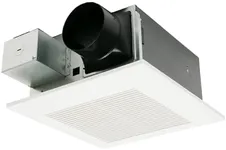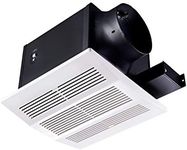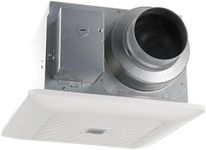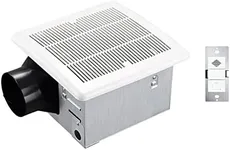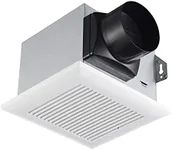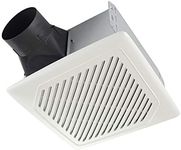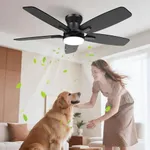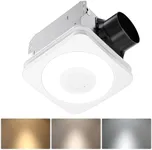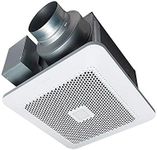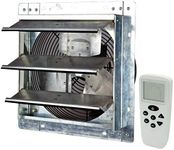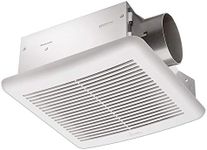Buying Guide for the Best Exhaust Fan With Humidity Sensors
Choosing an exhaust fan with a humidity sensor is a smart way to keep your bathroom, kitchen, or laundry area free from excess moisture, which can lead to mold, mildew, and unpleasant odors. The right fan will automatically turn on when humidity rises, making it convenient and energy-efficient. To find the best fit, it's important to understand the key features and how they relate to your specific needs and the size of your space.Airflow Capacity (CFM)Airflow capacity, measured in Cubic Feet per Minute (CFM), tells you how much air the fan can move in a minute. This is important because a fan that's too weak won't remove enough moisture, while one that's too strong may be unnecessarily noisy or use more energy. Small bathrooms or laundry rooms usually need a fan with lower CFM (around 50-80), while larger spaces or rooms with high ceilings may require higher CFM (100 or more). To pick the right one, match the CFM to the size of your room—generally, you need about 1 CFM per square foot of floor space.
Humidity Sensor SensitivityThe humidity sensor detects moisture in the air and triggers the fan to turn on or off automatically. Sensitivity refers to how quickly and at what humidity level the fan responds. Some sensors allow you to adjust the threshold (for example, between 50% and 80% relative humidity). If you live in a humid climate or want the fan to activate at lower moisture levels, look for a model with adjustable sensitivity. For most users, a mid-range setting works well, but if you have frequent condensation or mold issues, a more sensitive sensor is better.
Noise Level (Sones)Noise level is measured in sones, with lower numbers meaning quieter operation. This matters if you want a peaceful environment, especially in bathrooms or bedrooms. Fans range from very quiet (around 0.5-1.5 sones) to louder (over 4 sones). If you’re sensitive to noise or the fan will run often, choose a quieter model. For utility rooms or places where noise isn’t a concern, a higher sone rating may be acceptable.
Energy EfficiencyEnergy efficiency tells you how much electricity the fan uses to do its job. More efficient fans save on energy bills and are better for the environment. Look for features like Energy Star certification, which means the fan meets certain efficiency standards. If you plan to use the fan frequently or want to minimize energy use, prioritize models with higher efficiency ratings.
Installation Type and SizeExhaust fans come in different sizes and installation types, such as ceiling-mounted, wall-mounted, or window-mounted. The size and type you need depend on your room layout and existing ductwork. Measure the space where you plan to install the fan and check compatibility with your current setup. If you’re replacing an old fan, try to match the size and type for easier installation. For new installations, consider which location will best remove moisture from the room.
Additional FeaturesSome exhaust fans offer extra features like built-in lights, timers, or motion sensors. These can add convenience and functionality. For example, a timer can keep the fan running for a set period after you leave the room, ensuring all moisture is removed. If you want more automation or multi-functionality, look for models with these added features. Choose based on what will make your daily routine easier and more comfortable.
